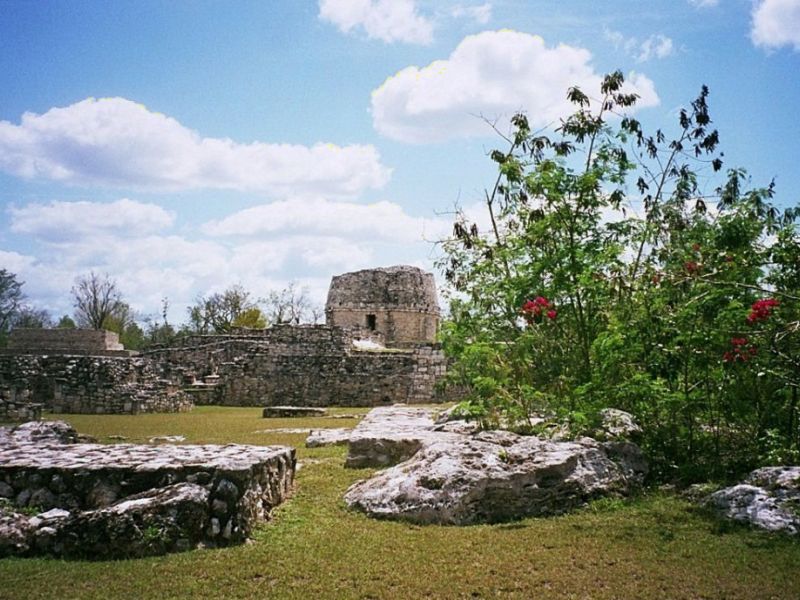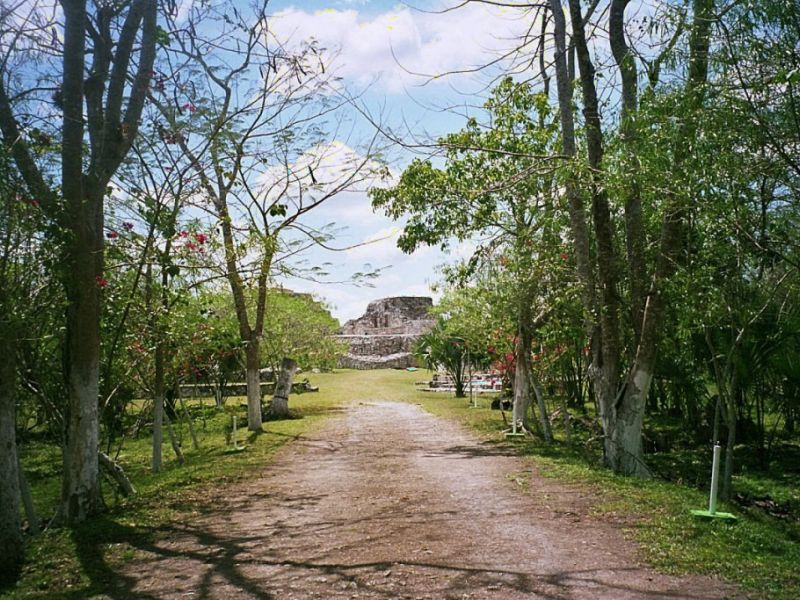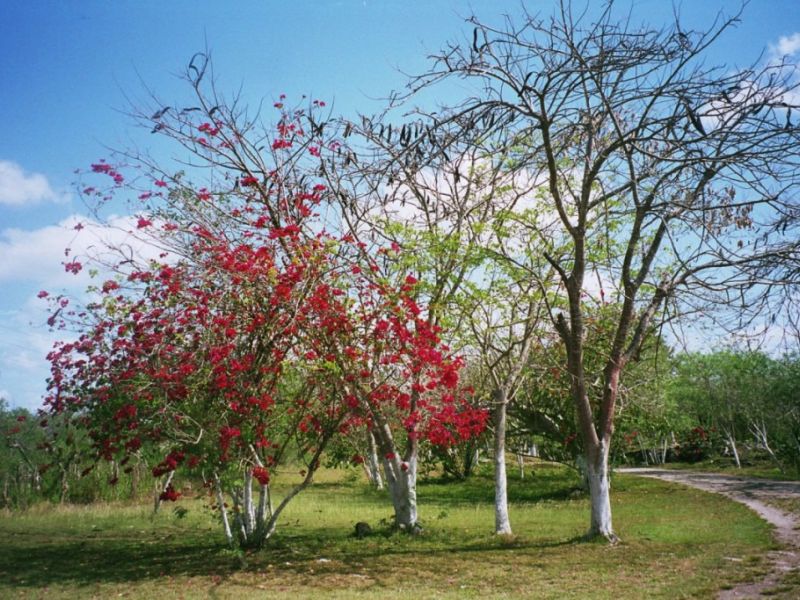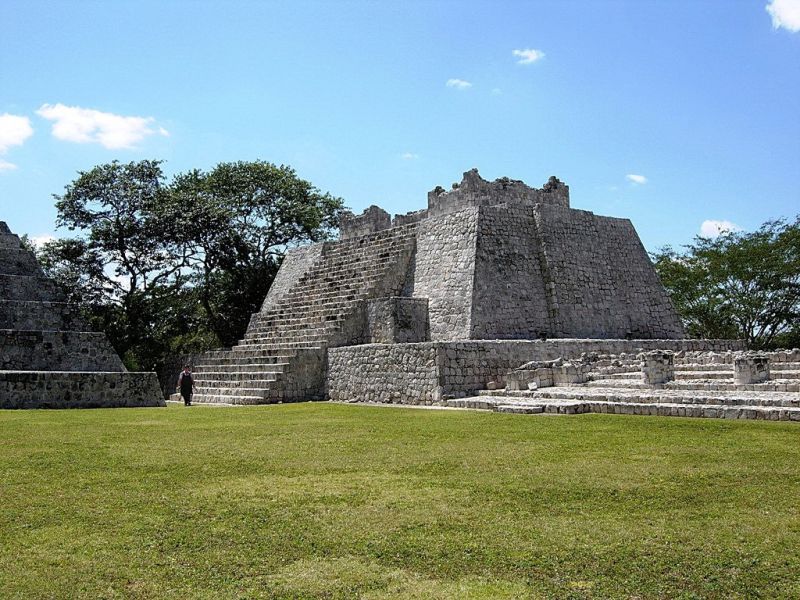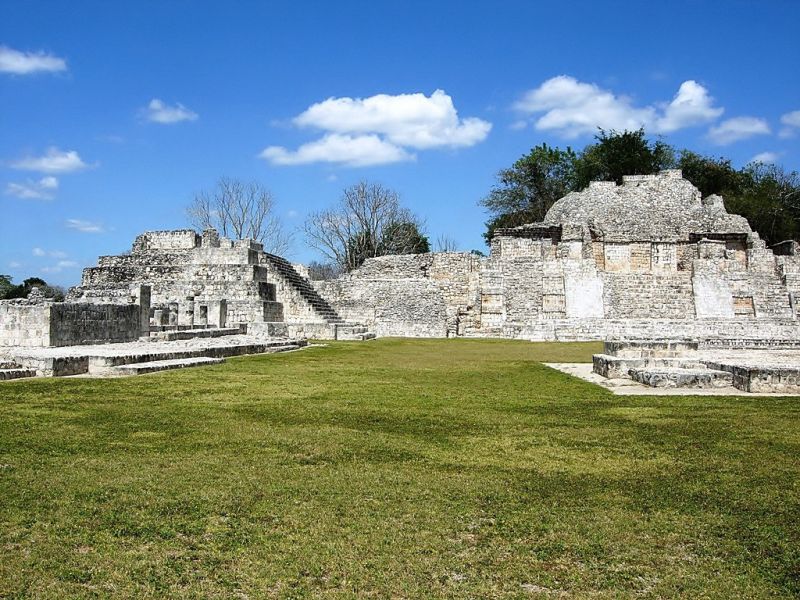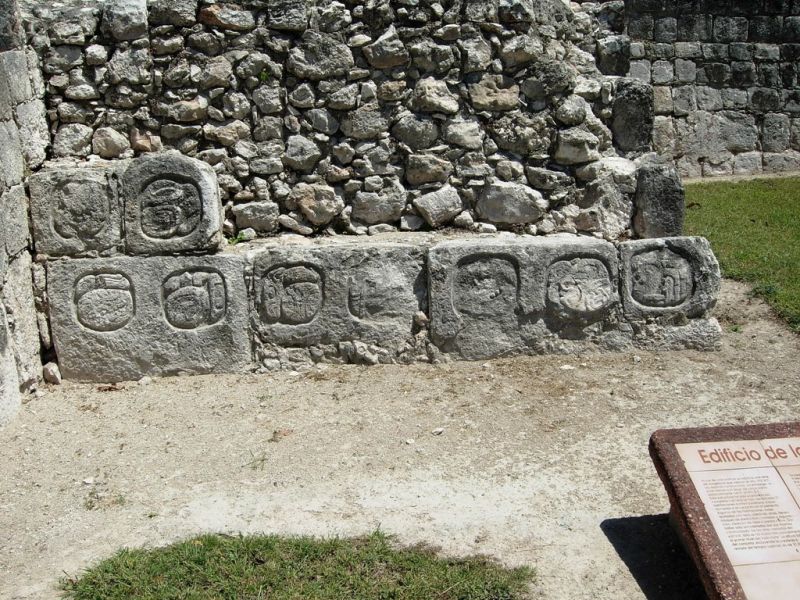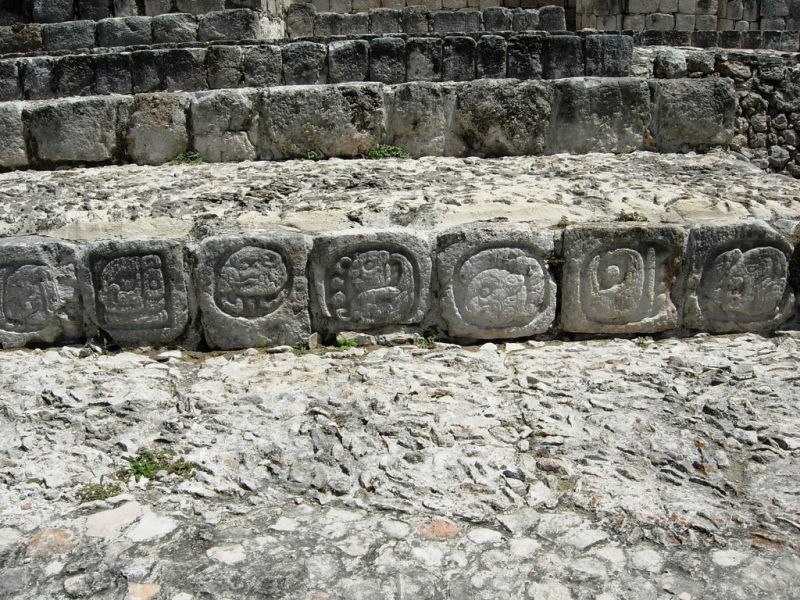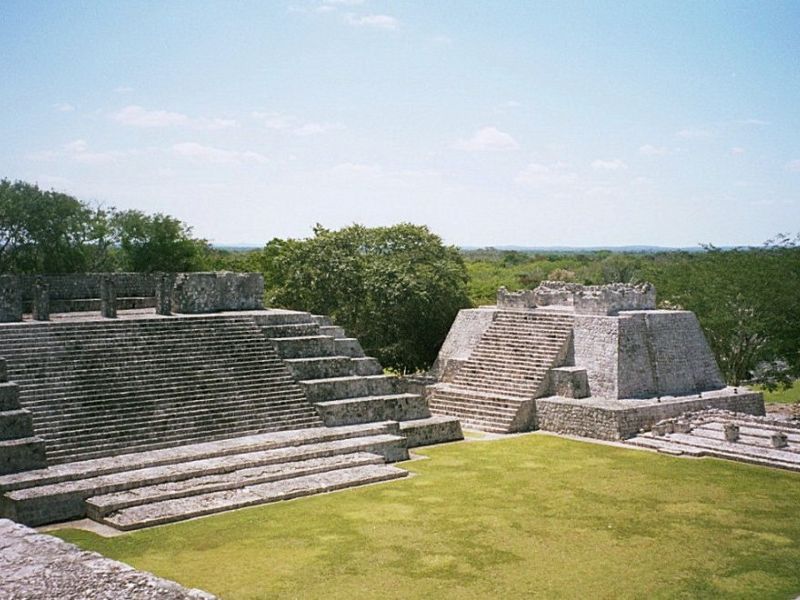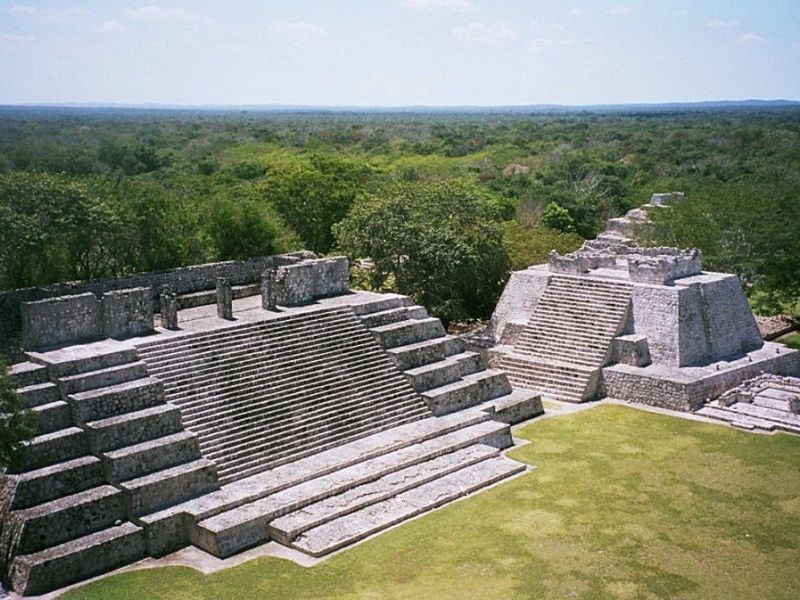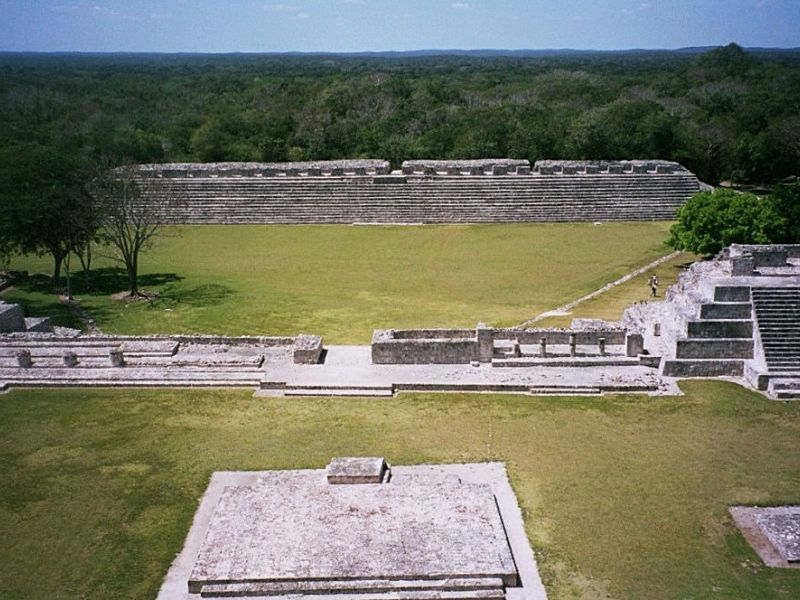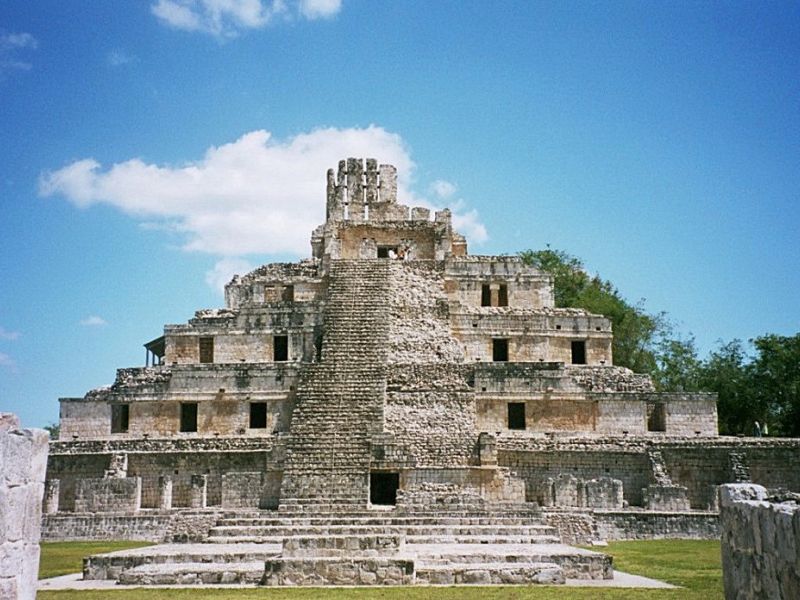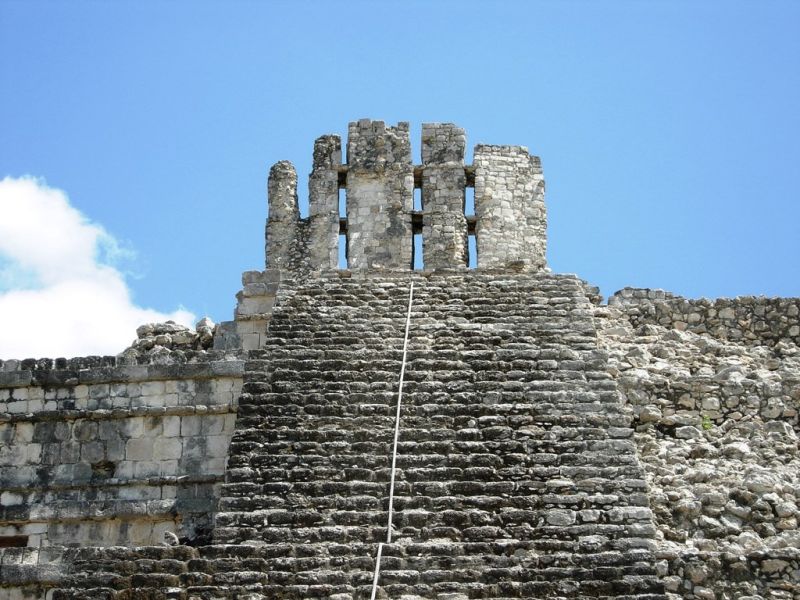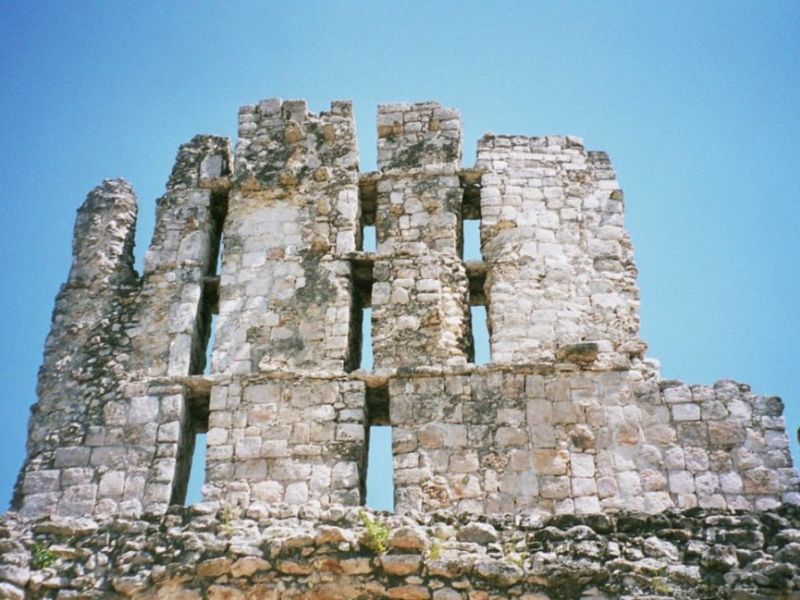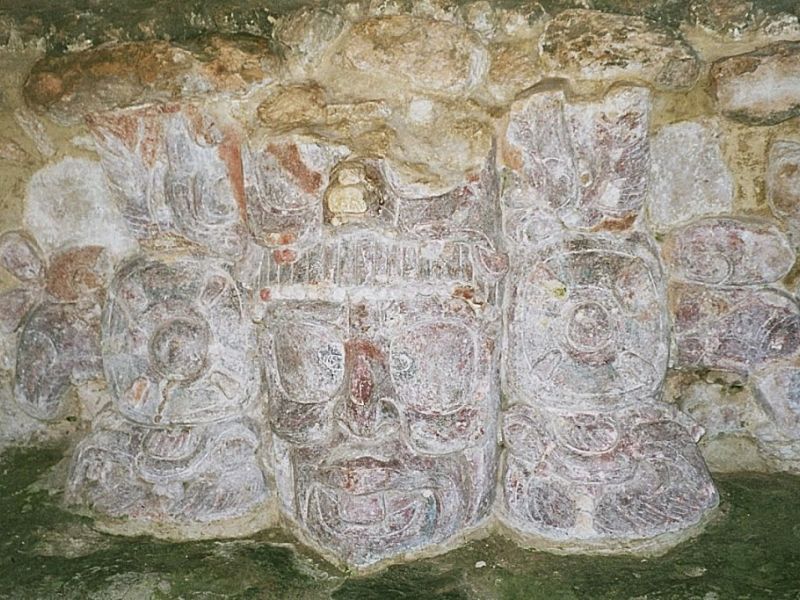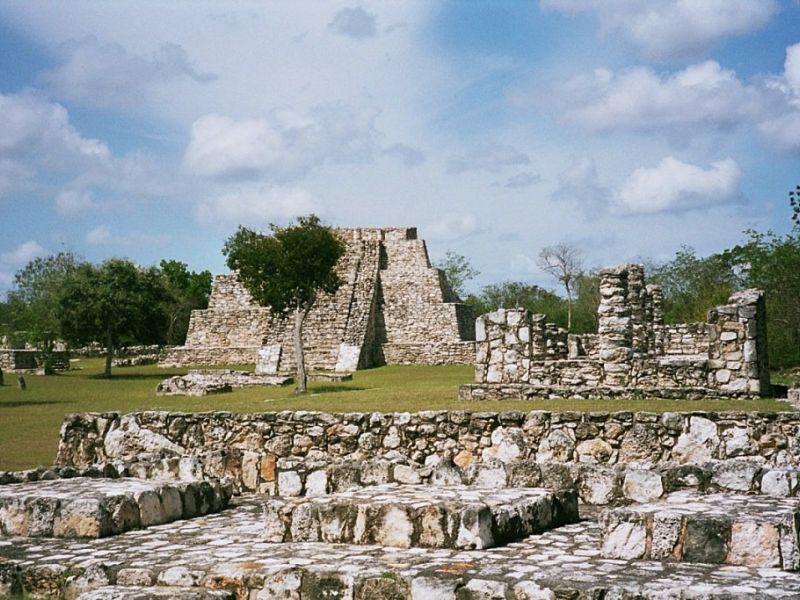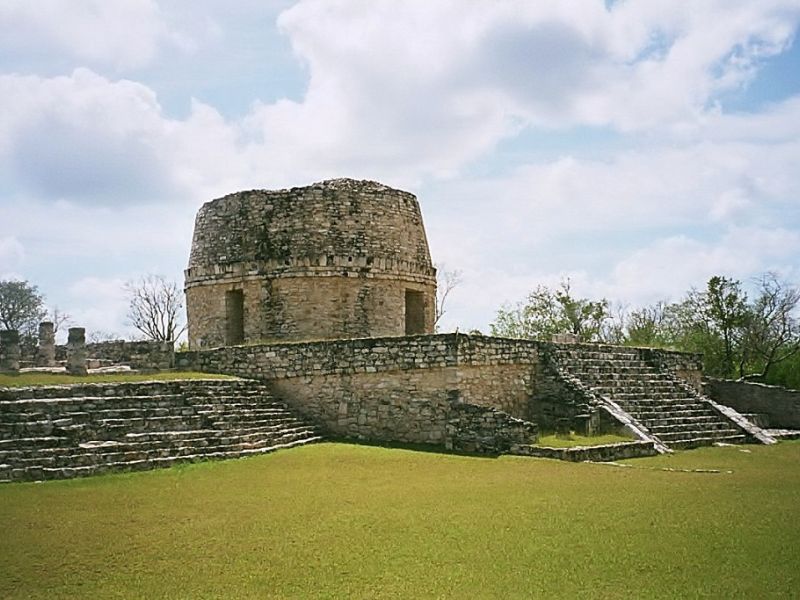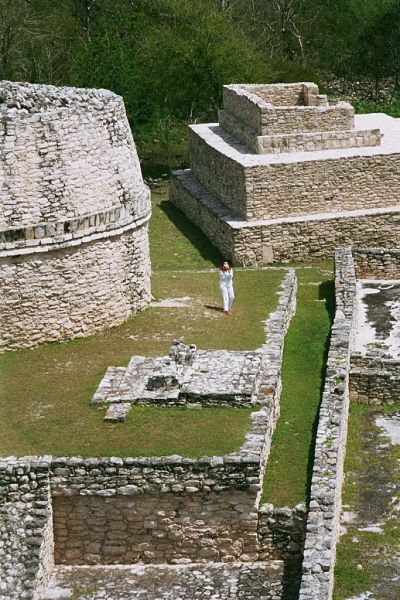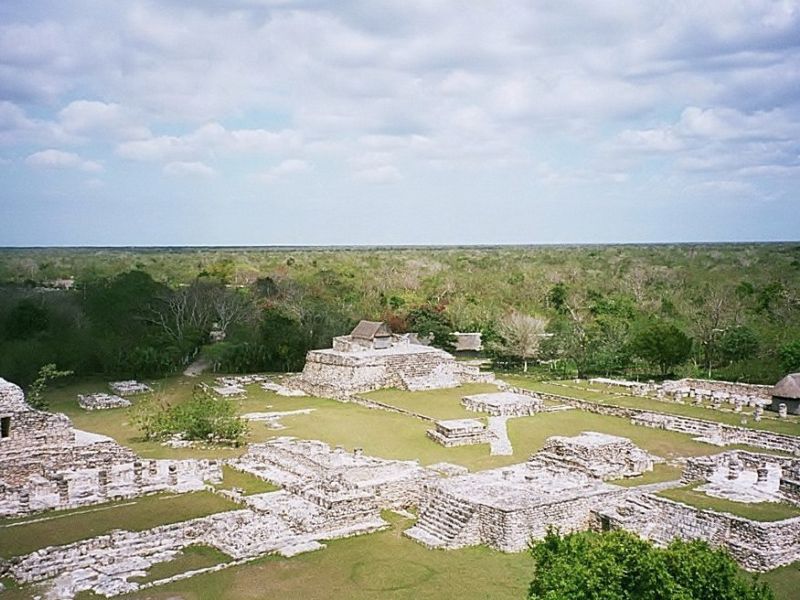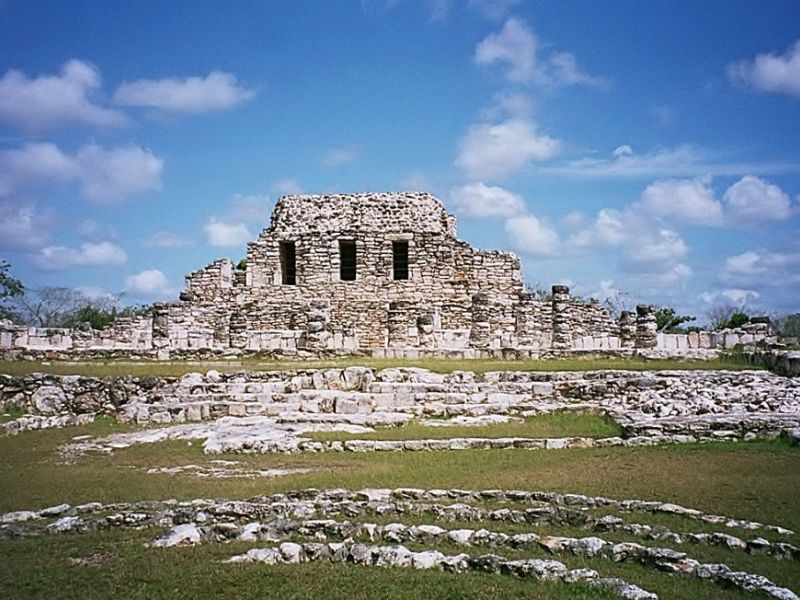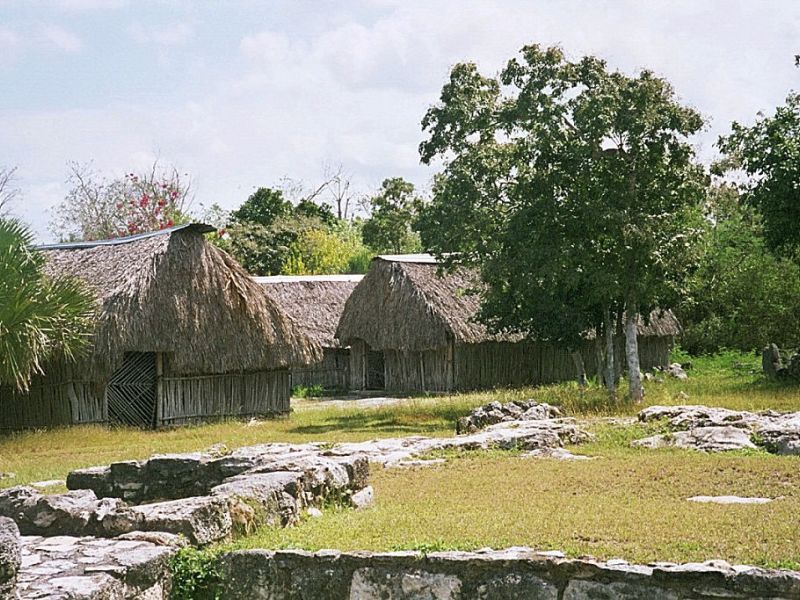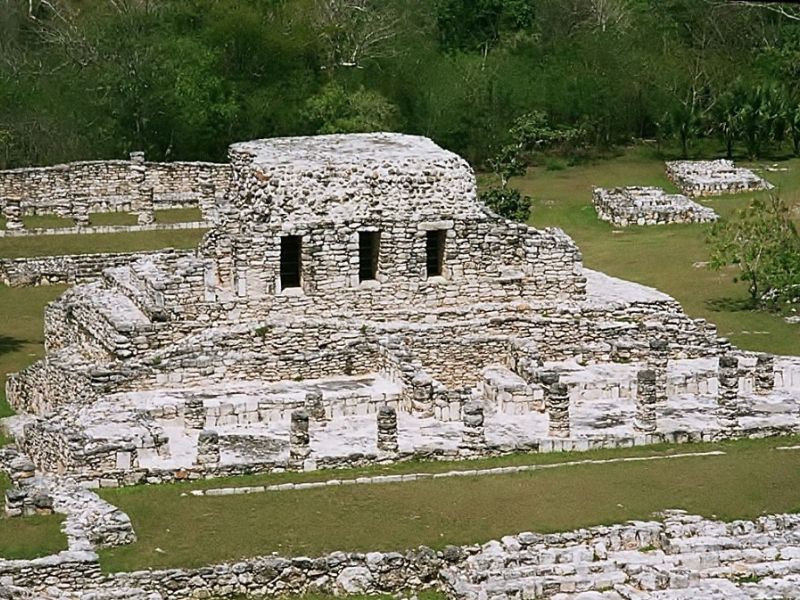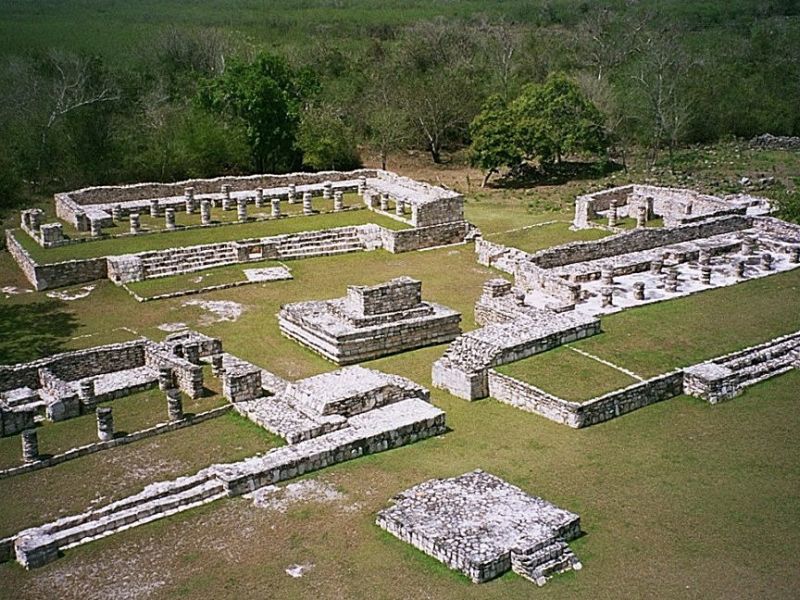





















Edzná, rarely Etzná, is a Mayan archaeological site in the Edzná Valley in the state of Campeche in the west of the Yucatán Peninsula, Mexico. The technology developed here to drain rainwater and the extraordinary façade of the so-called "palace pyramid" make it one of the most interesting Mayan cities. Edzná is home to numerous temples, administrative buildings and palaces spread over an area of around 25 km². The architecture was influenced by the Puuc, Petén and Chenes styles. The simple Mayan huts of the simple population were scattered outside the stone-built ceremonial center.
The name comes from an old Yucatecan word that is perhaps an allusion to the Itzaes, a name given to several groups originating from south-eastern Campeche. In this case, Edzná would mean "House of the Itzaes". Another possible meaning would be "House of the Echo", which has already been heard among the tallest buildings in the village. A third possibility would be "House of Grimaces", after a stucco mask that is said to have existed on the top of the tallest building.
The first evidence of settlement in this area dates back to 400 BC, when a society developed that practiced agriculture and, to a lesser extent, livestock farming (e.g. turkeys). In the following centuries, a complex social structure was formed, which made it possible to build monumental buildings and irrigation channels.
In the first centuries of our era, a centralized system of government developed in Edzná, which was legitimized by the relationship between the rulers and the gods. In the years between 400 and 1000 AD, the city became a cultural center of the western Yucatán; the population at that time is estimated at around 70,000. During the Late Classical period, Edzná belonged to Calakmul's sphere of influence. The last recorded date of the Long Count dates back to 810. Between 1450 and 1500, Edzná, which at that time was located in the catchment area of the Chuchcabal Canpech and Chan Putun, was abandoned.
